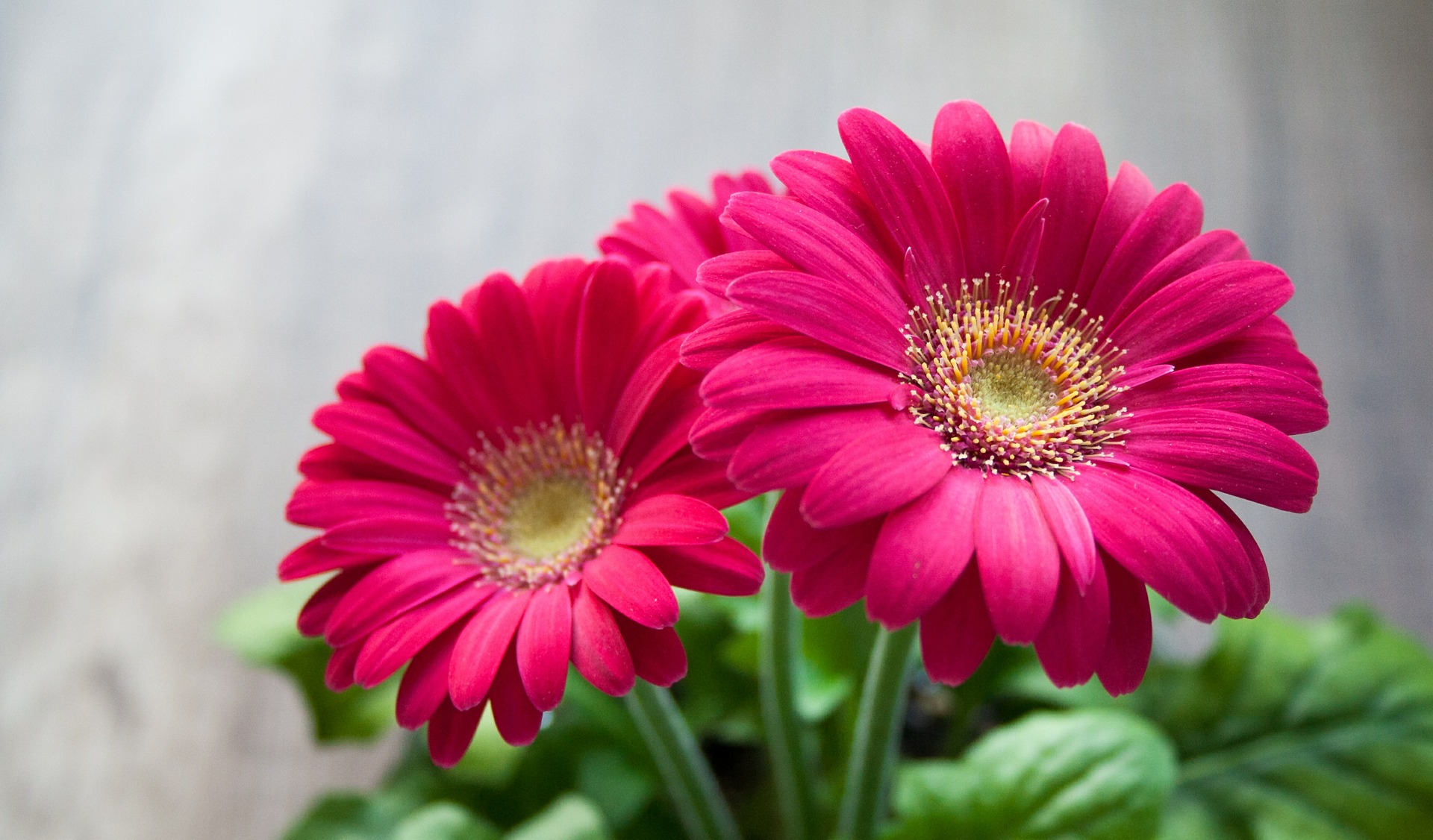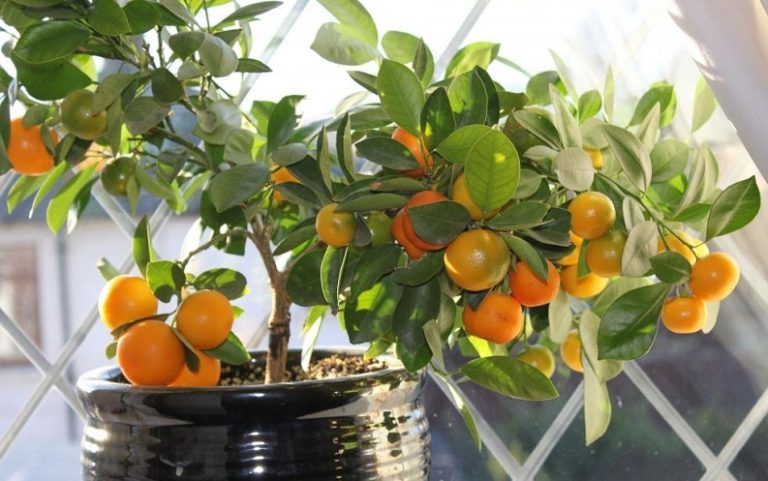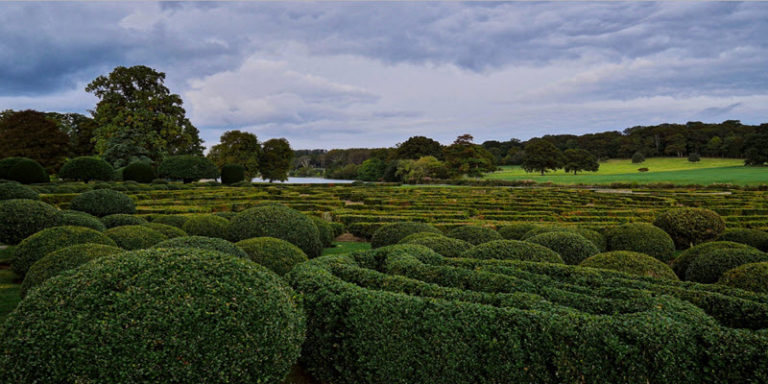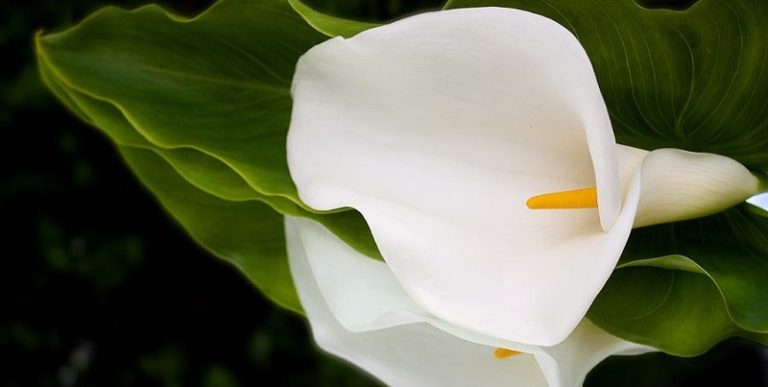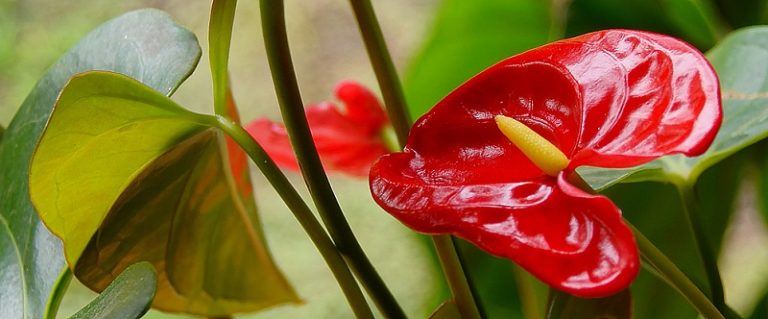Gerbera: care and reproduction
Hebera is a perennial herbaceous plant that forms a basal rosette from which pedicels grow. Gerbera belongs to the Asteraceae family. The shape of gerbera flowers is very similar to chamomile flowers, they are compound-flowered. A peduncle grows from the basal rosette, on a coarse stem and a delicate colorful flower blooms on it.
The height of the plant in indoor species is up to 35 cm, the diameter of the flower can reach up to 12 cm. Flowers can be of different colors: from white to burgundy. In its natural environment, gerbera can be found in South Africa, in the rainforests of Asia and Madagascar.
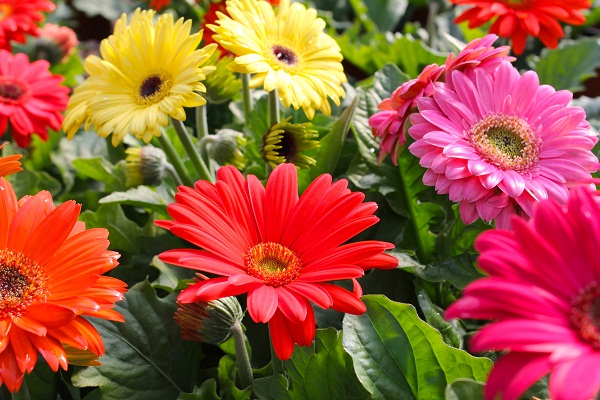
For growing gerberas at home , breeders have bred hybrid species, the most popular of which is Jemson’s gerbera (G. jamesonii Bolus ex Hook, Gerbera Hummingbird, Gerbera Happipot, Gerbera Parade, Gerbera Ilios). Gerbera in nature and indoors blooms 2 times a year. The first flowering is from August to November, followed by a dormant period, the second flowering begins in February and lasts until May, and the plant has a dormant period again. This is the natural cycle of gerberas. With proper care, indoor gerbera actively develops and blooms profusely for 3-4 years, after the expiration of this period, the plant must be rejuvenated by dividing it.
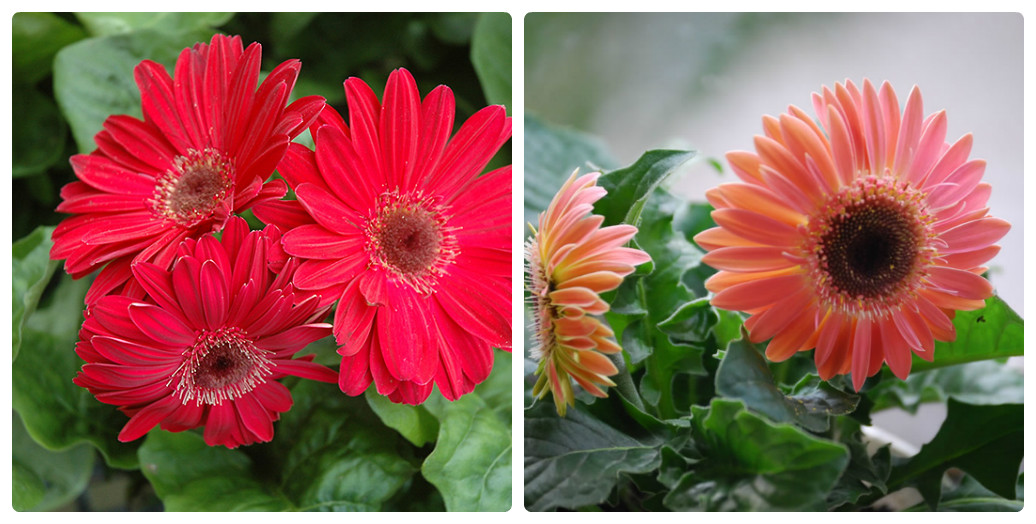
How to care for a gerbera?
Having created the right conditions, these beautiful flowers will bloom profusely and delight your eye with their bright colors.
See also:ORCHIDS – ORCHID CARE
Light brightness for gerbera
Gerbera loves bright light, and even direct sunlight will not harm it in the morning and evening. At lunchtime, the plant should be shaded from direct spring-autumn sunlight. In winter, she needs to provide additional lighting so that daylight hours last 12 hours.
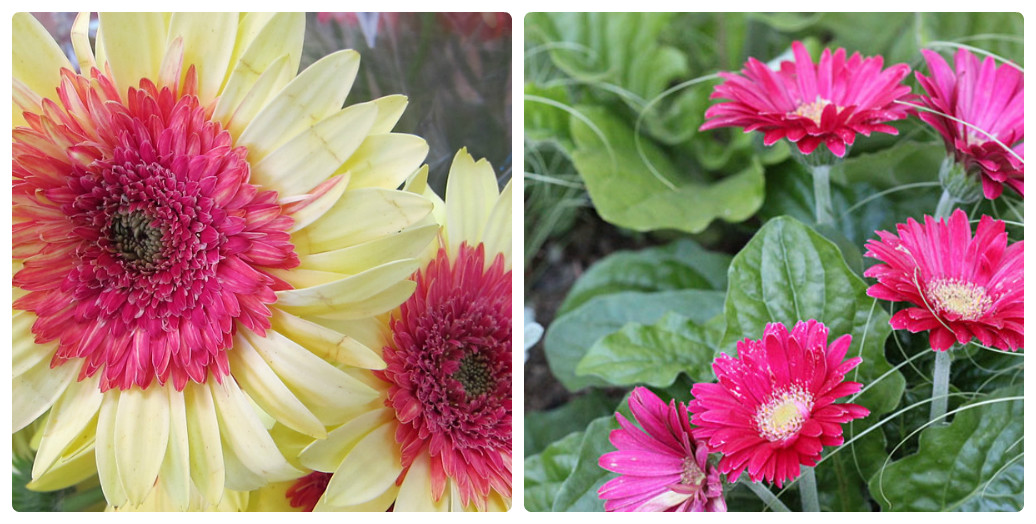
Air temperature for gerbera
For normal development, the air temperature for gerberas should be different at different times: during flowering – a comfortable temperature from +20- +25 ° C, in winter – up to +16 ° C, but not lower than +12 ° C. A sharp change in temperature during the day and at night, especially during flowering, is detrimental to gerbera.
Gerbera loves fresh air, but does not tolerate overdrafts, take it out into the yard in the spring and autumn.
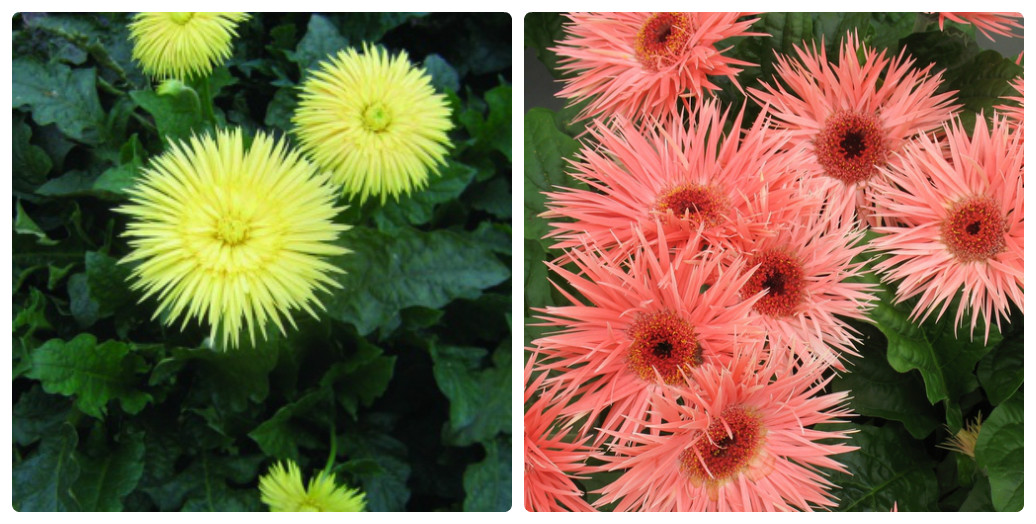
Watering and humidity for gerbera
In order for the plant to feel good and not get sick, it needs to be properly watered. In indoor gerbera, the soil should be moist, drying out of the earthen lump should not be allowed, especially during flowering. You need to water the gerbera with warm, soft water under the root so that water does not fall into the root outlet, the best way to water is to pour water into the pan (after 15 minutes, drain the excess water). Watering with cold water is detrimental to the plant ( t of water should be at least +20 ° C).
The air humidity should be high, but you need to spray the leaves very carefully so that drops of water do not fall on the flowers and into the basal rosette, but only on the leaves. How to increase air humidity on hot days.
Gerbera transplant
A favorable period for transplanting or propagation by dividing a gerbera bush is the dormant period: before the start of active growth, that is, the beginning of January and the beginning of July. The soil for gerbera should be slightly acidic, which includes leafy soil, peat and sand ( 2: 1: 1), but without the addition of organic fertilizers. Take a pot for planting gerberas small in size – up to 1.5 liters will be enough. At the bottom of the pot, it is imperative to make a drainage hole and fill in a layer of drainage (expanded clay, up to 1 cm).
You need to transplant the plant 1 time per year, carefully, by transshipment so as not to damage the delicate roots of the gerbera.
Fertilizer for gerbera
It is best to feed indoor gerberas with complex mineral fertilizers for flowering plants 1 time in 14 days during the period of active growth and flowering. Organic fertilizers cannot be used.
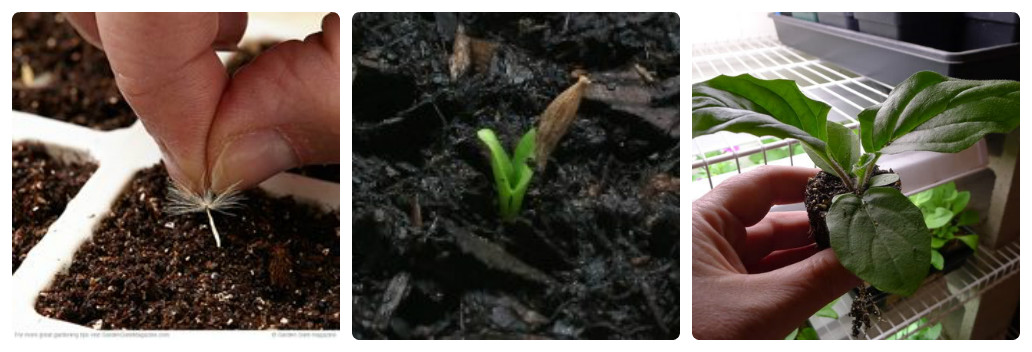
Gerbera reproduction
Gerbera propagates by seeds and dividing the bush during transplantation.
Pests and diseases
Diseases that threaten gerbera with improper watering: powdery mildew, gray rot; pests: whitefly, aphids and spider mites.
When the first signs of the disease appear, a sick or pest-infected plant should be isolated from healthy ones, and the damaged parts should be removed. Then treat the plant with a suitable preparation: pest insecticide or disease fungicide.

